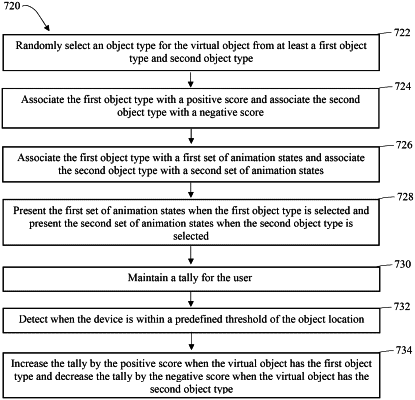| CPC H04S 7/303 (2013.01) [G02B 27/017 (2013.01); G02B 2027/0138 (2013.01); G02B 2027/0178 (2013.01); H04S 2400/11 (2013.01)] | 20 Claims |

|
1. An eyewear device comprising:
at least one image sensor having a field of view;
a display having a viewing area corresponding to the field of view;
a support structure configured to be head-mounted on a user, the support structure supporting the at least one image sensor; and
a processor, a memory, and programming in said memory, wherein execution of said programming by said processor configures the eyewear device to:
capture, with the at least one image sensor, image information of an environment surrounding the eyewear device;
identify an object location within the environment;
associate a virtual object with the identified object location;
monitor position of the eyewear device with respect to the virtual object responsive to the captured image information;
determine when the object location is within the viewing area of the display;
present, on the display, video signals including the virtual object in the object location responsive to the monitored position when the identified object location is determined to be within the viewing area;
select an object type for the virtual object from at least a first object type and second object type, the first object type associated with a first set of animation states and the second object type associated with a second set of animation states,
wherein to present the virtual object the eyewear device is configured to present the first set of animation states when the first object type is selected and to present the second set of animation states when the second object type is selected;
maintain a tally for the user, wherein the first object type is associated with a first score and the second object type is associated with a second score;
detect when the eyewear device is within a predefined threshold of the object location; and
adjust the tally by the first score when the virtual object has the first object type and adjust the tally by the second score when the virtual object has the second object type.
|